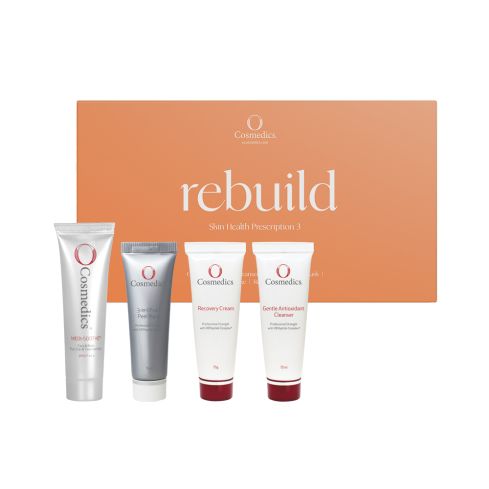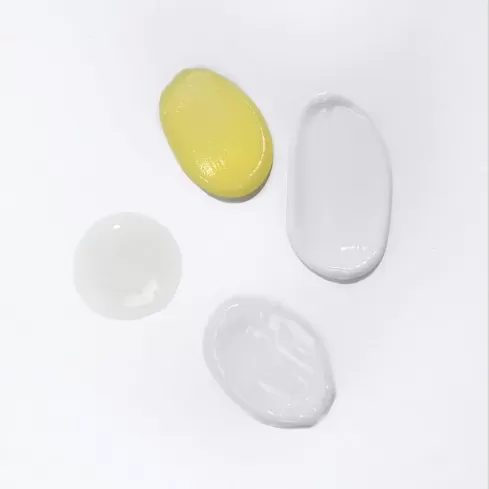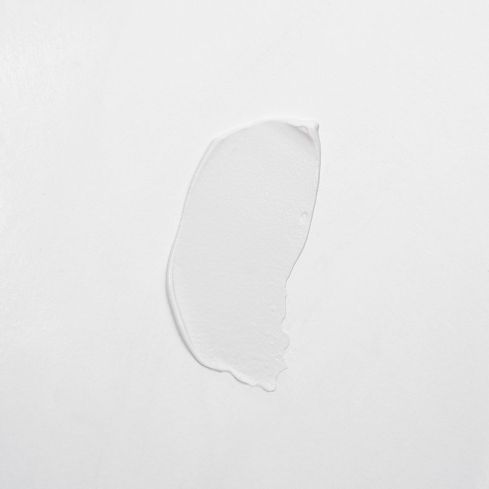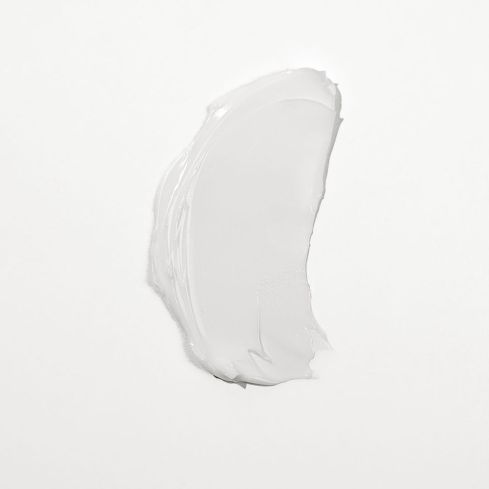Skin Care Routine: How To Layer Skincare Products
10 minute read


Ever felt the sudden urge to jump on the next nostalgia train departing the station and take a ride back to a simpler time when things at least seemed somewhat easier or less in your face? Us too. As with all things in life, when we know better, we do better, and that same philosophy can be transferred to the way you treat your skin and the avalanche of products in your cupboard (or on your wish list).
See, beauty began with a simple skin care routine: Step 1, 2 and 3, and costing a bomb for minimal results. Then, over the last decade or so, some product ranges changed their tune, convincing the masses that they require a 10-step regime to have glowing, youthful skin (like a mass skincare product psychosis).
Now in your skin care routine you may have a face cleanser, multiple face serums, a toner or two, an eye serum, a face mask, facial oils, moisturisers galore and exfoliators to boot! Or you may opt for the simple life and have just one or two of these. Either way, the grand task of knowing when to apply what to where and how can leave anyone feeling a sense of skincare application paralysis ending with shutting the cupboard door for future us to deal with.
Good news, we’ve put together a comprehensive list of how to’s and what to’s for you to simplify what you do have, maximise results and fill the gaps on what’s missing. In this article you’ll find the answers to the most commonly asked questions (and then some).
Why Does the Order of My Skincare Matter?
It matters because the myriad of skincare products available are generally formulated to work independently of each other and in varying layers of the skin. We trust (hope) that you aren’t applying your face serum to a face full of makeup… Why? Because your face cleanser and cleansing oils or balms are formulated to clean the skin first to ensure the hardworking face serum you’ve invested in can penetrate into the deeper layers of your skin.
It goes a little like this…
01 Cleanse: Layering skincare doesn’t have to be complicated. Hands down the most crucial, foundational place to begin your skin care routine is cleansing the skin effectively to remove all traces of dirt, grime, oil and makeup. In the morning, a simple one-step face cleanser like our favourite Gentle Antioxidant Cleanser (or GAC for short) is ideal. At the end of the day, pair it up and start with an oil-based face cleanser such as Nourishing Cleansing Balm to deeply dissolve all traces of your day, pollution and makeup and follow with GAC for the freshest of faces.
02 Tone: To tone or not tone…that is the question! Gone are the days of toning being a non-negotiable part of your skin care routine; with OG benefits of stripping the skin back, toners have come a long way, but still aren’t a necessity (if you’re cleansing correctly). If you feel super attached to this step in your regime, opt for a next generation style toner like our anti-pollutant shield Micellar Treatment Gel after using your face cleanser. Layering skincare is multi-functional with this powerhouse gel-like toner that coats the skin in a protective shield against environmental toxins whilst removing any leftover cleanser or makeup on the skin.
03 Serum: Whether it’s a face serum or an eye serum, they’re created with serious concentration to super boost all skin care routines. Most professional serums are formulated with the highest dosages of functional active ingredients like vitamins, antioxidants, peptides and Hyaluronic Acid. A face serum is designed to travel into the deeper layers of your skin to optimise cell function and work hard to correct or prevent common skin conditions like aging, acne, pigmentation and dehydration. Always, always apply your face serum and eye serum (whether it be the morning or evening) directly after thoroughly cleansing to ensure these hard workers can get into the layers of the skin required for serious skin health.
04 Hydrator: Seal the magic with a kiss of your favourite hydrator! These richer cream-based products are designed to provide an occlusive barrier to ensure serums don’t evaporate and water levels are retained. Richer in consistency, a hydrator or moisturiser will generally be formulated with humectants that bind moisture to the skin and oils that repair the skin barrier.
05 Facial Oil: With substantially less water in the formulation, a facial oil will deliver next level hydration and some serious lipid love back into a dry, dehydrated skin, providing an occlusive barrier to your hydrator whilst deeply nourishing and repairing a damaged skin barrier. Facial oils aren’t just for seriously thirsty skin; even oily skin will benefit from a quality facial oil designed to balance out the natural oils in your skin.
06 SPF: Do you really need sunscreen? Yes, you do! The finishing step for most morning skin care routines, Not only is SPF a crucial step in sun protection but it also protects precious skin cells from free radical attack and destruction of its structural scaffolding (AKA collagen and elastin). Using a mineral based SPF containing Zinc Oxide is the ultimate way to not only get quality sun protection but also a fabulous way of healing and calming an irritated skin thanks to Zinc Oxide that works like a 24/7 skin mechanic repairing and reducing inflammation.
Not sure which SPF is best for your skin? Check out our Ultimate Guide to Choosing The Best Sunscreen For Your Skin!
Exfoliators and Face Masks: Don’t worry, we didn’t forget these adored additions to any skincare lovers’ skin care routine! Both exfoliators and face masks are designed to be used as needed and (importantly) when listening to your skin. When it comes to layering skincare, a general rule of thumb for physical and chemical exfoliators (think grainy face scrubs vs enzymes and gentle AHA/BHA acids) is 1-2 times a week after cleansing. It’s important to not let your skin fall victim to the over-exfoliating obsession, too much of something is never a good thing!
Much like exfoliators, face masks are designed to be used for a mini at-home facial on a Friday night with your glass of wine and favourite pj’s. Whilst some can be used up to 3 times a week (enter Hydra Plus Sleep-In Mask) most face masks like fan favourite V8 Peptide Complex Sheet Masks are perfect for a once weekly treat following a thorough cleanse and exfoliation session.
How Many Steps Should My Skin Care Routine Be?


Each skin is unique meaning there is no cookie cutter approach to skincare or definitive answer to this question… What we can promise you is that more is not always best, and a 10-step skin care routine is no exception. When it comes to layering professional cosmedical skincare, where high dosages of functional actives are used in their purest and most potent forms in formulations that help to deliver these ingredients deep within the skin, we find that most skins start on a regime consisting of 4-5 products: face cleanser (sometimes two), Face Serum, Hydrator and SPF.
As the skin strengthens and the barrier repairs, it will become more tolerant to and ready for additional products; all in all, a traditional, daily skincare would consist of 5-6 products with weekly products such as Face Masks and Exfoliators bringing this total to 6-7.
What Are the Some Skincare Essentials For A Basic Skin Care Routine?
At the absolute minimum your skin care routine should consist of a gentle cleanser, preferably a gel-foam face cleanser with no SLS (Sodium Lauryl Sulphate) like Gentle Antioxidant Cleanser, a hydrator suitable for your skin type and a quality high zinc-based SPF like Mineral Pro.
This simple approach is best for those joining the skincare world and young inexperienced skins. However, if you’re after long term solutions to common skin conditions like aging, pigmentation, acne and breakouts or dehydration and sensitivity then you’ll need face serums and/or facial oils when layering skincare to help combat these conditions.
What Is the General Rule for Layering Skincare?
Okay, now you know the order your skincare products go in but what do you do if you have multiple face serums? When should you apply each one?
The easiest way to layer your face serums is by following the thin to thick consistency rule of applying thinner water-based serums first and following with any gel-like serums, then cream hydrators and moisturisers and finishing with rich balms or oils over the top. In the case of oil serums (adding confusion but maximising results) formulated for deep absorption whilst ensuring lipid absorption in the skin (like Vitamin C Hemp Seed Oil and Retinoic Oil), apply in very light amounts following water or gel-based serums and before your hydrator. These are not traditional facial oils that house large amounts of occlusive oils and are designed for increasing the richness of your hydrators or sealing them in as your last step like Youth Activating Oil-Balm.
What About Skin Cycling?
If you’re following the trends on SkinTok, you’ve likely heard of ‘Skin Cycling’. Created by a Dermatologist, Skin Cycling was designed first for skins that suffer with sensitivity, before going viral and being adopted by the masses to help “cycle through” the plethora of products they’d purchased – often without guidance or prescription from a Skin Expert.
Cycling is based on the concept of a workout, where you give your body time to rest and recover between sessions. For skin, a four-night cycle includes one night of exfoliation, another of Vitamin A and two of hydration and skin recovery. At O, for over a decade now, we have referred to this as ‘drip feeding’ the skin actives… Shake it up, add lime, a bunch of products you bought on a whim after falling for the latest skin trend and a TikTok twist and you’ve got Skin Cycling.
Our key takeaway from this: no skin should be exposed to products intense enough to mimic a strenuous workout or be treated with a cookie-cutter approach. Every skin type is different, skin conditions are all unique and should be prescribed a skin care routine based on quality and correct ingredients that will work for your skin specifically. For example, Skin Cycling suggests Retinol or Vitamin A should only be used once a week, but we know that the correct Retinol or Vitamin A for your skin gets better and better the more you use it, and the skin rejuvenation and anti-aging results mirror this upward trajectory.
Ultimately, it comes back to the Skin Expert. Purchasing products without their guidance and knowledge, and then feeling like you must cycle through them all means you are guaranteed an overflowing cupboard of products and run the risk of over-exfoliating and stripping the skin, leading to damage and sensitivity.
Which Active Ingredients Should I Use in The Morning and Which Should I Use at Night?
The golden rule for getting the most out of your active ingredients in your skincare is to layering skincare products for protection/prevention in the morning and repairing/regenerating in the evening by always following the thin-thick consistency rule.
As skincare actives are the superheroes of our products, it’s vital we apply them at the time of day they’re going to best do their job. Whilst the likes of Vitamin B, Vitamin C and Antioxidants work best in the morning, actives such as Vitamin A (Retinol and other forms) face serums and AHA & BHAs will work their magic in an evening skin care routine. Somewhere in between you’ve got Hyaluronic Acid which your skin will benefit from in both the morning and evening.
This is not to say you can’t use your Vitamin B, C and antioxidants in the evening too- you can definitely go HAM with protection if that’s what your skin needs under the recommendation of a Skin Expert, however for the sake of knowing when to use what and when, let’s break it down ingredient by ingredient.
- Vitamin C (Morning): A master antioxidant that works by coating skin cells with a shield of protection from UV exposure. This protective armour around your cells and neutralises the havoc that free radicals from the sun can wreak on your skin. Using a Vitamin C face serum also prevents skin from over-producing pigment whilst stimulating new collagen production (yes please!). If that wasn’t enough, Vitamin C can stay in the skin for up to 24 hours meaning that one application in the morning will give you the benefits of its power for the duration of the day and evening- no need to reapply at night!
- Niacinamide (Morning & Night): Being a multifaceted form of Vitamin B, it offers an array of benefits for the skin and for this reason using it both in the morning and evening is not only great but also required for some skins. Layering skincare products containing Niacinamide in the morning and evening, such as face masks and face serums is best for those suffering with acne, congestion and breakouts due to its oil balancing and immune strengthening qualities. One of the other strong benefits this vitamin offers is prevention against pigment; if you’re using it and unsure when is best, don’t skip the morning application. Use just in the morning or double down on this bad boy and opt for both morning and evening for maximum results. Want to learn more about the benefits of incorporating a Niacinamide Serum into your skin care routine? Check out our blog on How To Use A Niacinamide Serum and Its Benefits!
- Antioxidants (Morning & Night): Protectors and preventers working to eradicate damaging particles found within skin. Similar to Niacinamide, layering skincare products containing antioxidants give you great benefit in the morning as well as the evening. However, don’t skip that morning application as it is the day’s damage of UV and pollution that require these powerful skincare actives to stop them before they start to break down your skin. Antioxidants are found in most O Cosmedics products, including face cleansers, exfoliators and face masks.
- AHAs & BHAs (Night): Alpha Hydroxy and Beta Hydroxy Acids are the key to unplugging blackheads and resurfacing the outer layer of thickened skin. Found commonly in exfoliators and face cleansers, AHAs (Lactic and Glycolic Acid) are water loving acids that rejuvenate dull, thickened and dehydrated skins while BHAs work through oil, congestion and bacteria making them both best suited for evening application, as a freshly exfoliated skin will be best laid to rest at night and not galivanting around in the sun.
- Retinol & Retinoids (Night): Equipped with the power to regulate skin function and oil production, increase cell turn over (exfoliate) and induce collagen production, Retinol (including other forms of Vitamin A) face serums and eye serums should only ever be used in the evening as we want to keep this healthy, fresh skin as well protected as possible. Layering skincare products containing Retinol in the morning increases your chance of irritation and burning even if not in direct sun light.
And that’s a wrap! You’ve got the tools; now layer away! Follow the steps and if in doubt, start a live chat or visit one of the many thousands of O Skin Experts across the country. They’ll be able to help you build your own tailored skin care routine or understand how to layer skincare products correctly!






























